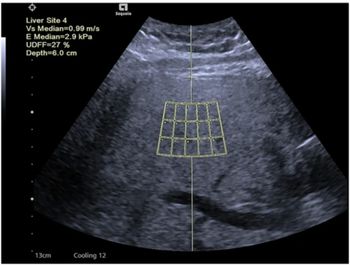
Improving on PET: Adding a Blue Glow, Removing a Crystal
PET hybrid technologies are already hot, and two innovations discussed during the final session of ECR 2011 are aimed at making them more even powerful and efficient.
PET hybrid technologies are already hot, and two innovations discussed during the final session of ECR 2011 are aimed at making them more even powerful and efficient.
A team based at Memorial Sloan-Kettering Cancer Center in New York has expanded on preclinical testing of a method that detects Cerenkov radiation (the same emission that gives nuclear reactor their eerie blue color) using PET scans, which could enable a unique dual-modality form of PET. And microprocessor-based detectors now under development in Spain could dramatically improve PET's resolution and efficiency.
Cerenkov Luminescence Imaging had its launch in a
Last June, in the Journal of Nuclear Medicine, researchers published
Cerenkov radiation imaging could be used to guide resection of tumors either endoscopically or intraoperatively, predicted team member Alessandro Ruggiero, who now works in the department of nuclear medicine at Erasmus Medical Center in Rotterdam. The researchers also envision that it could be used for low-cost, high-throughput in vivo testing of radioactive tracers.
Would surgeons really be willing to adopt a technology that required them to use a radioactive tracer in the operative environment? Martin Pomper, deputy director of the In Vivo Cellular and Molecular Imaging Center at Johns Hopkins University, expressed skepticism, given the large number of existing fluorescent tracers for PET. Ruggiero responded that they hoped to develop agents with a longer half-life than zirconium. If they can achieve that, Pomper said privately, "there's a chance, but it's a little bit remote."
Whatever the source of the signal in the PET scanner, engineers at the Institute for High-Energy Physics in Barcelona are confident that they have found a much better way to detect it than the scintillating crystals used in current scanners. Their
Because the detector is solid state, it can be made small enough to fit right inside the gantry of a hybrid MRI-PET scanner, he said, which makes its signal completely impervious to drift due to the strong magnetic field. Built on a Medipix2 integrated circuit, the detector has a 1 mm x 1 mm x 2 mm resolution. With a signal scatter of a mere 2 percent, said Chmeissani, its signal-to-noise ratio is roughly 30 times better than that of a state-of-the-art clinical PET scanner. Next, the Barcelona team intends to attach it to a gamma camera, predicting that it will increase the sensitivity by a factor of 100 over a current pinhole gamma camera.
Commercial development of the detector is sponsored by a 20 million-Euro grant from the European Research Council. Chmeissani declined to speculate when it would be ready for clinical use, but he did anticipate that its use will be limited.
"This is specifically designed for the brain," he said. "The market for PET scanners is about one per million people. I expect this would be used for about one in every ten million people. It's a very dedicated device.”
Newsletter
Stay at the forefront of radiology with the Diagnostic Imaging newsletter, delivering the latest news, clinical insights, and imaging advancements for today’s radiologists.






























